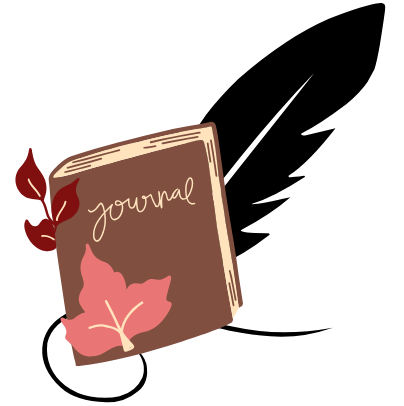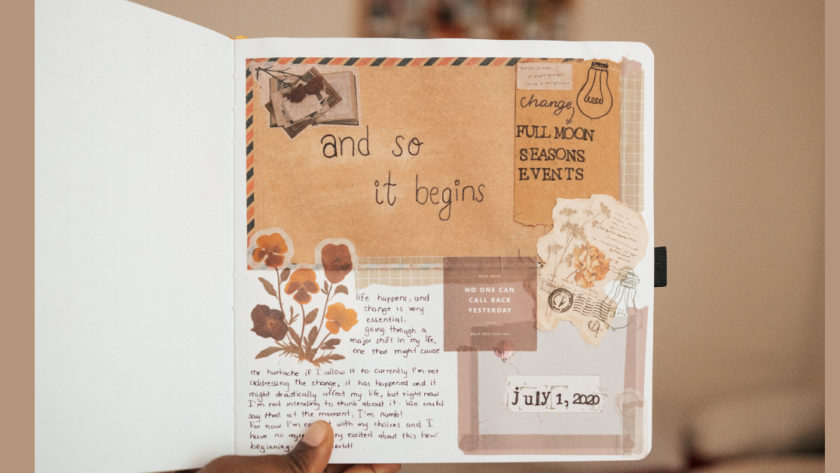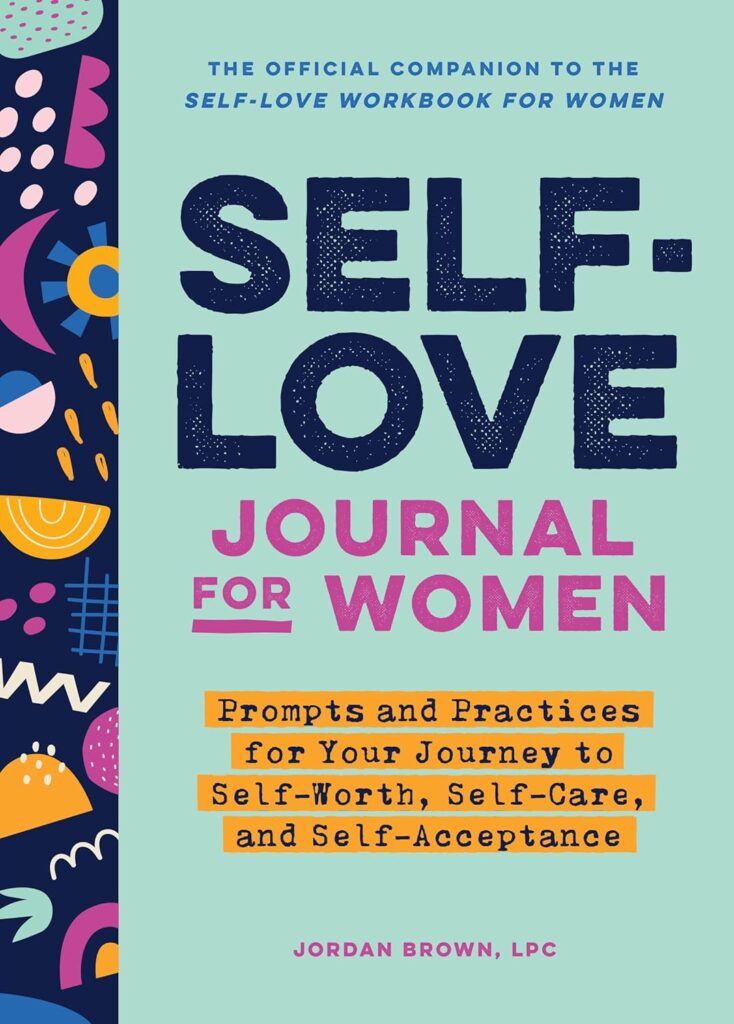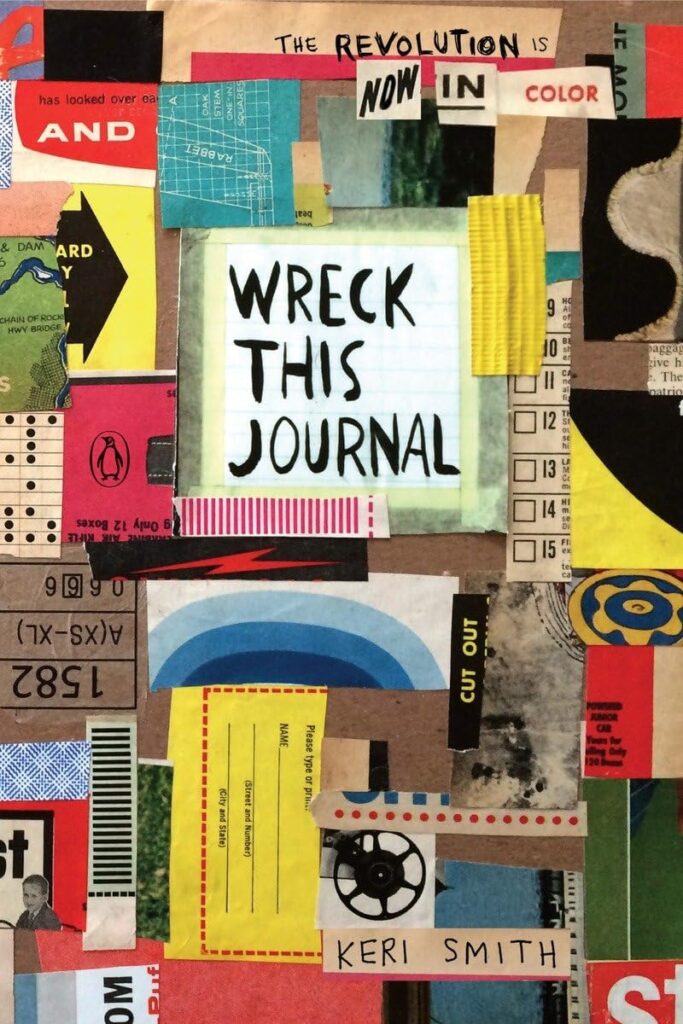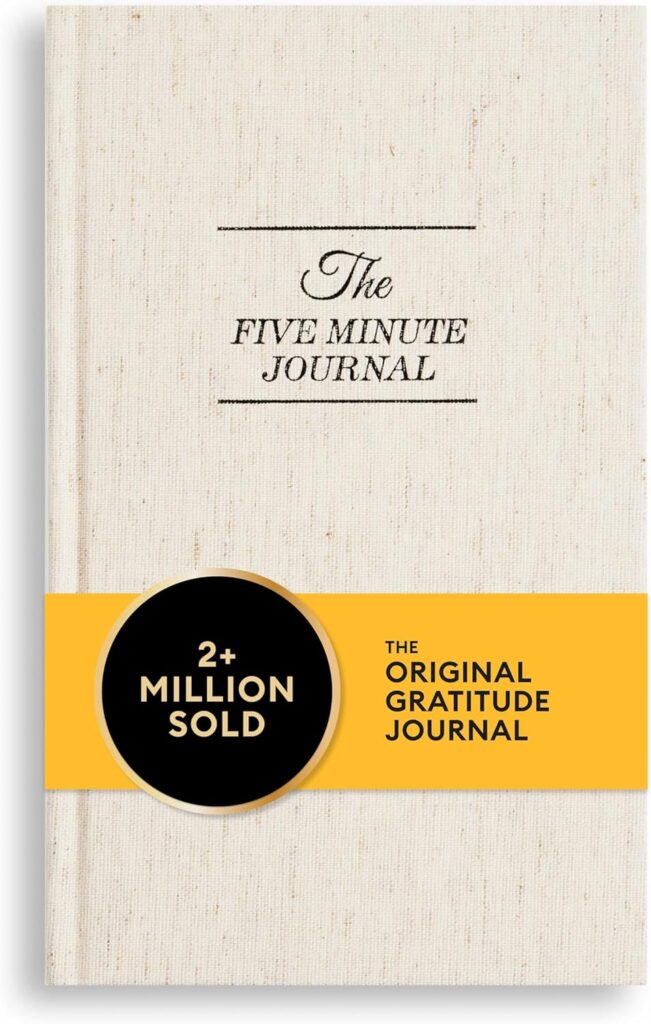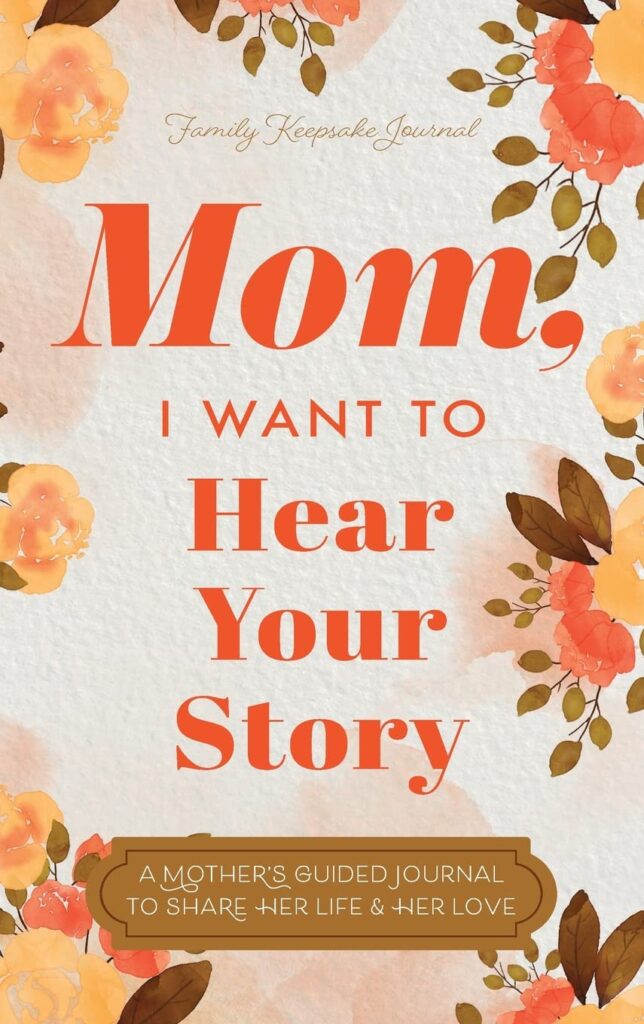Journaling is a powerful tool for self-discovery, personal growth, and creative expression. With the right prompts, you can uncover hidden thoughts, explore your emotions, and gain valuable insights into your life.
Let’s explore the top 7 best journals with prompts that can help you kickstart your journaling practice or take your existing one to new heights.
Just a heads-up: This post contains affiliate links, which means if you click and make a purchase, I may earn a small commission—at no extra cost to you. I only recommend journals that I believe can truly inspire creativity and self-reflection.
Now, let’s dive into the best journals with prompts to help you on your journey!
1. Dad, I Want to Hear Your Story
This journal provides a heartwarming way for fathers to share their life experiences, wisdom, and memories with their children and family. It’s filled with thoughtful prompts designed to encourage dads to explore their past, present, and hopes for the future.
The prompts in this journal cover a wide range of topics, from childhood memories and family traditions to career milestones and life lessons learned.
It asks questions like “What was your favorite childhood game?” or “What’s the best advice you’ve ever received?” These prompts serve as conversation starters, helping fathers articulate thoughts and memories they might not have considered sharing otherwise.
One of the most valuable aspects of this journal is it’s ability to bridge generational gaps. Children often know their parents only in the context of their role as mom or dad, but this journal allows them to see their father as a whole person with a rich history and unique experiences.
It’s an opportunity for dads to pass down family stories, share their values, and offer guidance in a format that can be treasured for years to come.
The journal can also be a powerful tool for self-reflection for fathers. As they answer the prompts, they might gain new insights into their own lives, values, and experiences.
This process of reflection can lead to personal growth and a deeper understanding of oneself.
For children, this journal becomes a priceless keepsake. It’s a window into their father’s life, personality, and wisdom that they can revisit throughout their lives.
As they grow older and face their own challenges, they can turn to their father’s words for guidance and comfort.
The act of filling out this journal can also strengthen the bond between fathers and their children. It creates opportunities for meaningful conversations and shared moments of reflection.
Children might be inspired to ask follow-up questions, leading to even deeper discussions and connections.
2. A Year of Us: A Couples Journal
Relationships thrive on communication, shared experiences, and mutual understanding. The “A Year of Us” couples journal is designed to foster these elements, helping partners deepen their bond through daily reflection and shared writing.
This journal covers a wide range of topics, from lighthearted and fun to deeply emotional and thought-provoking. The journal is structured to be used over the course of a year, with prompts for each day.
These prompts encourage couples to explore various aspects of their relationship, their personal selves, and their shared future.
You might find questions about your first date, your dreams for the future, or how you handle conflicts. There are also prompts that invite you to express gratitude for your partner or to reflect on the growth you’ve experienced together.
Taking a few minutes each day to sit down together, reflect, and write can become a cherished part of your routine. It provides a structured way to check in with each other, celebrate your relationship, and address any concerns or dreams you have.
The journal can also serve as a tool for conflict resolution. By regularly discussing your thoughts and feelings, you may be able to address small issues before they become larger problems.
The prompts can help you practice open and honest communication in a safe, structured environment.
Plus, the journal can be a source of comfort and connection during challenging times. On days when you might struggle to find the right words, the prompts can guide your conversation and help you express your feelings.
Looking back on your entries can be a rewarding experience. You’ll be able to see how your relationship has grown and changed over the year.
You might notice patterns in your interactions, or rediscover sweet moments you had forgotten.
The “A Year of Us” journal can also be a great tool for long-distance couples. Even when you’re physically apart, you can still share the experience of answering the same prompts each day, helping you stay connected and aligned.
3. Burn After Writing
In our digital age, where every thought and experience is often shared instantly on social media, the “Burn After Writing” journal offers a refreshing counterpoint. This journal encourages introspection and honest self-reflection without the pressure of an audience.
It’s designed to be a private space for your thoughts, free from the influence of likes, comments, or shares.
The prompts in “Burn After Writing” are intentionally provocative and deeply personal. They challenge you to confront your fears, examine your beliefs, and explore parts of yourself you might typically keep hidden.
Questions might range from “What’s the most illegal thing you’ve ever done?” to “What’s your biggest regret?” The idea is to answer these questions with finish honesty, knowing that no one else will ever read your responses.
The name “Burn After Writing” is more than just a catchy title – it’s a philosophy. The journal encourages you to destroy it after you’ve filled it out, symbolizing the release of your thoughts and the freedom to express yourself without consequences.
This act of destruction can be cathartic, allowing you to let go of past experiences or negative thoughts.
This journal can be particularly helpful for processing difficult emotions or experiences. By writing about these topics with finish honesty, knowing that the words will never be seen by anyone else, you can work through your feelings without fear of judgment.
The process of writing in this journal can also lead to significant self-discovery. As you answer the provocative prompts, you might uncover truths about yourself that you weren’t fully aware of.
This increased self-awareness can be a powerful tool for personal growth and development.
Plus, the act of physically destroying the journal after writing can be a powerful symbolic gesture. It can represent letting go of past regrets, forgiving yourself for mistakes, or releasing negative thoughts and emotions.
This can be particularly therapeutic for those dealing with anxiety, guilt, or other challenging emotions.
The “Burn After Writing” journal also serves as a reminder of the value of privacy in our increasingly public world. It encourages us to have thoughts and experiences that are solely our own, not shared with the world at large.
This can be a refreshing change from the constant pressure to share every aspect of our lives on social media.
4. Self-Love Journal for Women
Self-love is an ongoing process, not a destination, and the “Self-Love Journal for Women” is designed to be a compassionate companion on that journey. As a companion to the bestselling “Self Love Workbook for Women,” this journal builds on the principles of self-compassion, self-acceptance, and personal growth.
The prompts in this journal are carefully crafted to guide women through various aspects of self-love. They encourage reflection on personal strengths, body image, relationships, and life goals.
You might find prompts asking you to list things you love about yourself, to describe a time when you stood up for your beliefs, or to envision your ideal future.
This journal focuses on practical exercises and actionable steps. It involves transforming your thoughts into positive actions.
The journal might prompt you to practice self-care, set boundaries, or challenge negative self-talk.
These exercises help reinforce the concept that self-love is an active practice, not just a passive state of mind.
One of the key benefits of this journal is it’s ability to help women reframe negative self-talk. By regularly engaging with prompts that encourage positive self-reflection, users can begin to challenge and change the critical inner voice that many women struggle with.
The journal also addresses the societal pressures and expectations often placed on women. It encourages users to question these norms and define success and beauty on their own terms.
This can be incredibly empowering, helping women to break free from limiting beliefs and societal constraints.
Plus, the “Self-Love Journal for Women” recognizes that self-love isn’t always easy. It thanks that there will be difficult days and setbacks.
The journal provides strategies for dealing with these challenges, teaching resilience and self-compassion even in tough times.
The journal also emphasizes the importance of celebrating small victories. It encourages women to thank and appreciate their daily accomplishments, no matter how small they might seem.
This practice can significantly boost self-esteem and overall well-being.
Another valuable aspect of this journal is it’s focus on holistic self-love. It doesn’t just focus on appearance or achievements, but encourages women to appreciate all aspects of themselves – their minds, bodies, spirits, and unique qualities.
By consistently using this journal, women can develop a stronger sense of self, improved confidence, and a more positive outlook on life. It’s a powerful tool for personal growth and empowerment.
5. Wreck This Journal
For those who find traditional journaling too structured or intimidating, “Wreck This Journal” offers a wildly creative choice. This journal, now available in full color, is designed to unleash your creativity through unconventional and often destructive prompts.
It’s less about writing and more about artistic expression and breaking free from constraints.
The prompts in “Wreck This Journal” are unlike anything you’ll find in other journals. You might be instructed to “Poke holes in this page using a pencil,” “Drip something on this page,” or “Rip this page out and throw it away.” These prompts challenge the idea of what a journal should be and encourage you to think outside the box.
The beauty of “Wreck This Journal” comes from it’s ability to free you from perfectionism and the fear of making mistakes. By intentionally “wrecking” the journal, you learn to let go of control and embrace imperfection.
This process can be incredibly liberating and can translate into other areas of your life, encouraging a more spontaneous and carefree approach to creativity.
One of the most significant benefits of this journal is it’s ability to help overcome creative blocks. By engaging in seemingly nonsensical or destructive acts, you’re forced to think differently and approach problems from new angles.
This can be particularly helpful for artists, writers, or anyone feeling stuck in their creative pursuits.
The journal also serves as a powerful stress-reliever. The act of physically manipulating the pages – crumpling them, tearing them, or even throwing the book – can be a cathartic release for pent-up emotions or frustrations.
Plus, “Wreck This Journal” challenges our relationship with material possessions. In what happens when we’re often taught to keep things pristine and perfect, deliberately damaging a book can be a profound exercise in letting go of attachments and embracing impermanence.
The journal can also be a tool for mindfulness. Many of the prompts need you to be fully present in the moment, focusing on the physical sensations of the task at hand.
This can be a refreshing break from the constant distractions of daily life.
As you progress through the journal, you might find yourself becoming more comfortable with taking risks and trying new things. This increased willingness to experiment can spill over into other areas of your life, fostering personal growth and new experiences.
Ultimately, “Wreck This Journal” is about more than just destroying a book – this involves breaking down mental barriers, challenging preconceptions, and rediscovering the joy of uninhibited creativity.
6. The Five Minute Journal
In our fast-paced world, finding time for extended journaling sessions can be challenging. The Five Minute Journal addresses this issue by providing a structured, effective way to practice gratitude and set intentions in just five minutes a day.
This journal is designed to boost positivity and improve confidence through brief, focused entries.
The journal is structured with morning and evening prompts. In the morning, you’re encouraged to list three things you’re grateful for, three things that would make the day great, and a positive affirmation.
In the evening, you reflect on three amazing things that happened during the day and how you could have made the day even better.
The Five Minute Journal is effective because of it’s focus on positive psychology principles. By consistently directing your attention to the good things in your life and setting positive intentions, you train your brain to notice and appreciate the positive aspects of your day.
This simple practice can lead to significant improvements in overall well-being and life satisfaction.
One of the key benefits of this journal is it’s ability to shift your mindset. By starting each day with gratitude and positive intentions, you’re more likely to approach the day with optimism and resilience.
This can have a profound impact on how you handle challenges and interact with others.
The evening reflection prompts are equally important. By focusing on the positive aspects of your day, you’re reinforcing those good experiences in your memory.
This can help counteract our natural tendency to dwell on negative events.
Plus, the question about how you could have made the day better encourages continuous self-improvement without being overly critical. It’s a gentle way to thank areas for growth and set intentions for the future.
The brevity of the journal entries is a key feature. In just five minutes, you can significantly impact your mindset and emotional well-being.
This makes it easier to maintain the habit long-term, even on busy days.
The Five Minute Journal can also serve as a record of personal growth. Over time, you might notice patterns in what you’re grateful for or what makes your days great.
This can provide valuable insights into what truly matters to you and what contributes to your happiness.
For those struggling with stress or anxiety, this journal can be a powerful tool. The focus on gratitude and positive experiences can help shift attention away from worries and towards the good things in life, no matter how small they might seem.
Lastly, the journal can be a great way to bookend your day. The morning entry sets a positive tone for the day ahead, while the evening entry allows you to reflect and wind down, potentially improving sleep quality.
7. Mom, I Want to Hear Your Story
Similar to it’s counterpart for fathers, “Mom, I Want to Hear Your Story” is a guided journal that provides a platform for mothers to share their life stories, wisdom, and experiences with their children.
This journal is more than just a collection of memories – it’s a bridge between generations, a celebration of motherhood, and a lasting legacy.
The prompts in this journal are thoughtfully designed to cover various aspects of a mother’s life. They might ask about childhood experiences, important life decisions, dreams and aspirations, or lessons learned through motherhood.
Questions like “What was your favorite subject in school?” or “What’s the bravest thing you’ve ever done?” encourage mothers to reflect on different stages of their lives and share insights that their children might not otherwise know.
One of the most valuable aspects of this journal is it’s ability to strengthen the mother-child bond. As children read about their mother’s life experiences, challenges, and triumphs, they gain a deeper understanding and appreciation of who their mother is as a person, beyond her role as a parent.
This shared knowledge can foster empathy, respect, and closer connections.
For mothers, filling out this journal can be a profound experience of self-reflection. It provides an opportunity to look back on their lives, thank their growth and achievements, and pass on their wisdom to the next generation.
This process can be both affirming and healing, allowing mothers to recognize their own strength and resilience.
The journal can also serve as a valuable family history document. It captures stories, traditions, and family lore that might otherwise be lost over time.
Future generations will have the opportunity to know their ancestors in a more personal and meaningful way.
Plus, this journal can be a powerful tool for opening up conversations between mothers and their children. The prompts might inspire further questions or discussions, leading to deeper understanding and connection.
It can be particularly valuable for adult children who are seeking to know their mothers better or to understand their own roots more fully.
For children, this journal becomes a treasured keepsake. It’s a tangible piece of their mother’s love and wisdom that they can turn to throughout their lives.
In times of challenge or uncertainty, they can find comfort and guidance in their mother’s words.
The “Mom, I Want to Hear Your Story” journal also thanks the multifaceted nature of motherhood. It recognizes that mothers are people with their own dreams, fears, and experiences beyond their role as a parent.
This validation can be incredibly empowering for mothers who may sometimes feel that their identity is solely defined by motherhood.
Lastly, this journal creates a legacy of love and understanding that can be passed down through generations. It’s a gift not just for the immediate recipient, but for future family members who will have the opportunity to know their ancestor in a deeply personal way.
Key Takeaways
- Journaling with prompts can unlock creativity, foster self-reflection, and promote personal growth.
- Different types of journals cater to various needs, from daily gratitude practice to exploring family history.
- Consistency in journaling is more important than the frequency or length of entries.
- Prompted journals can provide structure and guidance, especially for those new to journaling.
- Journaling can have significant benefits for mental health, relationships, and goal achievement.
Frequently Asked Questions
What are the benefits of journaling with prompts?
Journaling with prompts can help structure your thoughts, encourage self-reflection, and provide direction when you’re not sure what to write about.
It can also help you explore topics or emotions you might not have considered on your own.
How often should I write in my journal?
The frequency of journaling is a personal choice. Some people prefer daily entries, while others might journal weekly or when they feel the need.
Consistency is more important than frequency, so choose a schedule that works for you and stick to it.
Can journaling help with mental health?
Yes, journaling can be useful for mental health. It can help reduce stress, manage anxiety, cope with depression, and improve your mood by helping you process your emotions and gain perspective on your experiences.
What’s the difference between a regular journal and a prompted journal?
A regular journal typically has blank pages for free writing, while a prompted journal provides specific questions or topics to guide your writing.
Prompted journals can be helpful if you’re new to journaling or if you want to focus on particular areas of self-reflection.
Is it okay to skip prompts in a guided journal?
Absolutely. While prompts are designed to guide you, you should feel free to skip any that don’t resonate with you or that you’re not comfortable answering.
The journal is a tool for your personal growth and reflection, so use it in the way that best serves you.
Can couples journaling improve a relationship?
Yes, couples journaling can improve communication, increase understanding between partners, and help identify areas of the relationship that need attention. It can also create shared experiences and memories.
How can I make journaling a habit?
To make journaling a habit, try to write at the same time each day, keep your journal easily accessible, start with small, manageable entries, and be patient with yourself as you develop the habit.
What should I do if I’m not comfortable with others reading my journal?
If privacy is a concern, consider keeping your journal in a secure location, using a digital journal with password protection, or choosing a journal like “Burn After Writing” that encourages destroying the contents after writing.
Can journaling help with goal setting and achievement?
Yes, journaling can be an effective tool for setting and achieving goals. It allows you to clarify your objectives, track your progress, and reflect on your successes and challenges along the way.
How can I overcome writer’s block when journaling?
If you’re experiencing writer’s block, try using prompts, writing about your immediate surroundings or current feelings, or simply free-writing without judgment for a set period of time.
